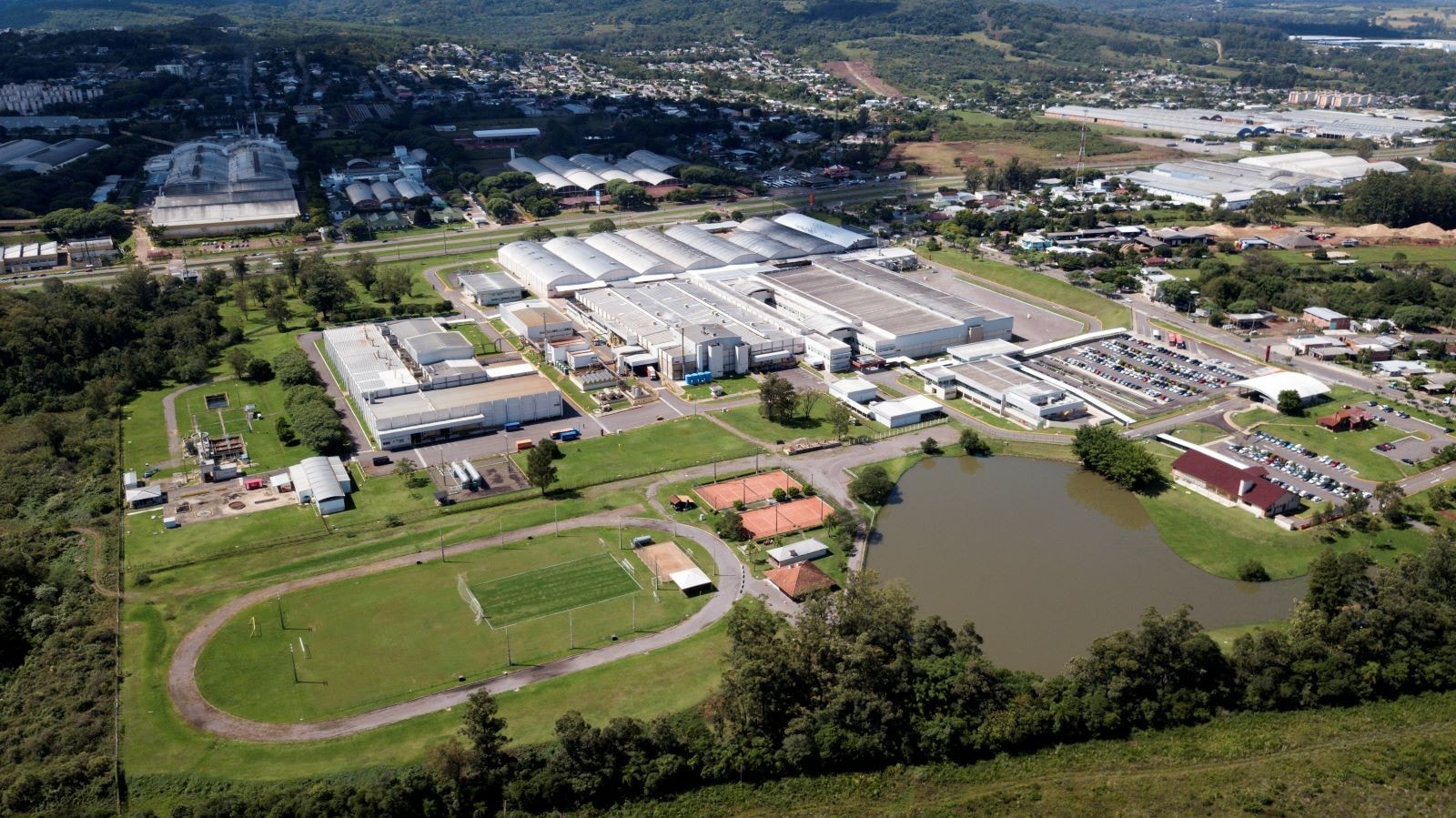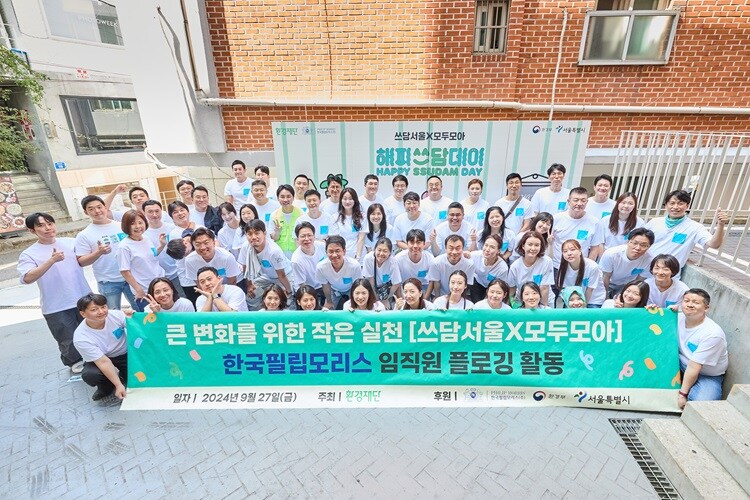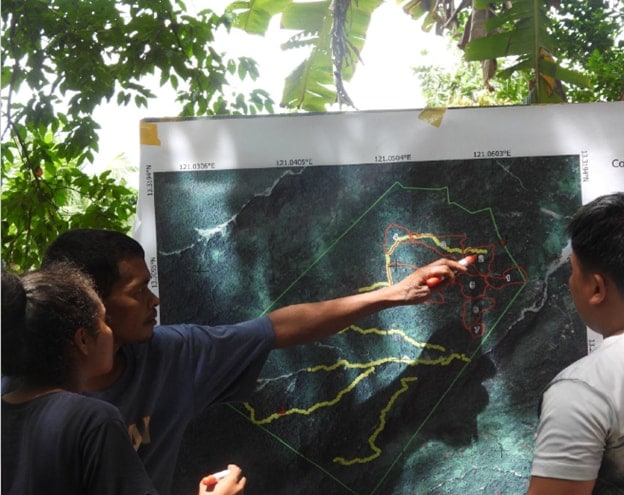Philip Morris Brazil (PMB) is one of Philip Morris International’s (PMI’s) most operationally diverse affiliates. Based in Santa Cruz do Sul, PMB manages a vertically integrated manufacturing site with primary processing, secondary production1, and a print shop—supported by a dedicated utilities zone that powers and maintains the site’s infrastructure.
The affiliate is simultaneously decarbonizing2 its fleet and actively piloting technologies that reduce emissions and save energy in support of its target to reduce energy consumption by at least seven percent every year.
PMB’s climate strategy is rooted in PMI’s global ambition to reach carbon neutrality across its direct operations (Scopes 1 and 2) by 2025. This ambition is supported by the Low Carbon Transition Plan, which guides affiliates such as PMB in deploying targeted solutions that reduce emissions to improve energy performance, switch to renewable options where possible, and compensate when necessary3.
The plan includes two complementary programs:
- Drive 4 Zero (D40), which focuses on operational efficiency and emissions reduction across manufacturing and fleet.
- Zero Carbon Tech (ZCT), which promotes the adoption of advanced technologies and renewable energy sources.

Image: Aerial view of PMB's manufacturing facility in Santa Cruz do Sul
The three steps to deliver climate ambitions are outlined below:
1. Reduce
PMB has implemented a range of technologies and operational upgrades to reduce energy consumption, including high-efficiency chillers with modulating speed controls, a wastewater treatment plant that recovers methane for electricity generation, and a shift from steam-based humidity control to a pressurized water spray system.
We upgraded the system that controls humidity in our lab and tobacco storage. Instead of using steam to cool the air, we now use a water spray, which uses much less energy. This change cost about USD 545,000 and is expected to save 6,400 gigajoules (GJ) of energy per year—which is significant, considering the entire site uses around 120,000 GJ annually.
We installed a new system that reuses hot water from steam used in tobacco processing, which helps save energy. This upgrade cost USD 280,000 and is expected to save about 6,300 GJ of energy per year.
We also made a simple change that didn’t cost anything: We started turning off the lab during non-working hours, especially at night. That alone saves around 5,000 GJ of energy per year.
At our wastewater treatment plant, we installed a generator that runs on methane gas—a byproduct of the water treatment process. This allows us to power the system for one full day each month using energy we’ve captured ourselves. It’s a small but meaningful change, saving about 100 GJ of energy per year.
Over the past five years, we’ve invested around USD 1.4 million in energy-saving initiatives in Brazil, resulting in estimated savings of 22,000 GJ of energy per year.
- Humidity control upgrade: We replaced a steam-based chiller system with high-efficiency chillers with modulating speed controls, improving the site’s energy efficiency by 25 percent and boosting performance from 3.3 to 3.9 kilowatts (KW) per unit of cooling.
- Steam trap system: Reused hot water from steam processes in tobacco production, saving 6,300 GJ per year.
- Lab shutdowns: Turning off the lab during non-working hours—especially at night—saved 5,000 GJ per year, with no cost.
- Methane recovery: At our wastewater treatment plant, we installed a generator that uses methane gas to power the system for one day per month, covering 7–10 percent of its own energy needs and saving 100 GJ per year, while further easing demand from the grid.
All these improvements are monitored daily to ensure consistent performance and encourage energy-conscious behavior across shifts.
To scale these energy-saving improvements across all operations, we’ve outlined several forward-looking projects. These include implementing solar thermal renewable energy systems, where solar panels will pre-heat water before it enters the steam boiler, reducing the energy required for steam generation.
At the tobacco plant, we plan to expand heat recovery by capturing furnace heat to pre-warm water, improving overall efficiency. We’re also upgrading the steam system in conditioning cylinders to a more advanced setup that minimizes thermal leakage. Additionally, we’re optimizing the performance of our chiller systems by integrating AI technology that automatically adjusts the number and speed of chillers based on real-time demand, ensuring smarter and more efficient energy use.

Image: Biomass boiler located in Santa Cruz do Sul, RS, Brazil.
2. Switch
In September 2020, PMB switched from an oil-based boiler to a biomass boiler, which led to a major drop in carbon emissions—about 67 percent less greenhouse gases, going from six million kilograms (kg) to two million kg per year.
The biomass boiler is partly powered by solar panels installed on-site, which generate electricity specifically for the boiler’s operation.
In logistics, PMB is shifting to ethanol-powered and hybrid vehicles, supported by a driver behavior program that promotes fuel-efficient practices. These initiatives align with PMI’s Drive 4 Zero and Zero Carbon Tech strategies, enabling PMB to reduce fossil fuel dependency across both factory and fleet.
“We approach manufacturing as a system of interdependencies—where every process, material, and metric is an opportunity to optimize,” said Samuel Francisco Koch, Manager Engineering, PMI Operations.
“Sustainability isn’t a separate track; it’s embedded in our engineering strategy. Whether applying technologies with lower environmental impact or redesigning workflows, our goal is to reduce emissions without compromising throughput, reliability, or cost-efficiency. The challenge is to make decarbonization a performance lever, not a trade-off.”
3. Compensate
For emissions that cannot yet be reduced or avoided, PMI purchases International Renewable Energy Certificates. As reductions from efficiency and switching increase, reliance on these will decrease over time.
Fleet: Driving decarbonization and reductions on the road
Whether moving products, visiting retail partners, or supporting operations on the ground, PMI’s 22,700 fleet vehicles are the everyday engine behind its business. With this essential role comes a significant environmental footprint, and a clear opportunity to drive meaningful change.
A clear business case for change: Local momentum, global impact
PMI’s journey to a lower-carbon fleet began with a sharp focus on performance data. In 2019, its global fleet emitted an average 222 grams of CO₂ per kilometer. By 2024, that figure dropped to 172 grams—a 23 percent decrease in emission intensity, reflecting its commitment to sustainability and aligning more closely with global trends in reducing fleet CO₂ emissions. It achieved these results through deliberate investments in more efficient vehicles through lower-emission powertrains, driver training programs, and connected fleet technologies across many affiliates.
Real success lies in local execution
Back in Brazil, the PMB team has adopted ethanol as an alternative to petrol, with the aim of significantly reducing vehicle emissions. By the end of 2024, 60 percent of the local fleet—which includes 619 vehicles—was running on ethanol. This shift led to a dramatic drop in emissions, from 141 grams of CO₂ per kilometer in 2022 to just 49 grams in 2025. While electric and hybrid vehicles are being considered for future use—especially in areas like São Paulo, where charging infrastructure is more developed—the biggest impact so far has come from switching fuels. This practical approach shows how decarbonization can be adapted to local conditions without losing sight of ambitious sustainability goals.
More than emissions: A better driver experience
Beyond measurable environmental and financial returns, PMB’s low-carbon fleet investments have delivered equally valuable benefits in other areas of the business. Across our company, a focus on driver wellbeing and safety has helped foster a culture of care and responsibility behind the wheel.
Fleet teams that fall short of their goals are engaged proactively, with support from the central Fleet Center of Expertise to identify how to course-correct—whether it’s a reporting issue, a seasonal challenge, or infrastructure constraints. This accountability culture ensures that targets aren’t just set, they’re met.
Sustainability isn’t a slogan—it’s a systems challenge. In PM Brazil, we’ve had to rethink everything: Fuel types, vehicle models, infrastructure, and supplier relationships. Switching to ethanol wasn’t just about emissions—it was about scalability, cost-efficiency, and local viability. We’ve piloted EVs, installed charging stations, and gamified driver behavior to reduce accidents and improve performance. But the real shift is cultural: We’re challenging our teams to think differently, because if we keep doing what we’ve always done, we’ll keep getting the same results. Sustainability by design means building for resilience, not just compliance.
Tovar Vlacic Morais
Coordinator WX Fleet & Travel, PM Brazil
Looking ahead: From pilots to partnerships
As we expand our use of low-carbon vehicles, we are strengthening the infrastructure to support them.
PMB is quickly becoming an example to follow for other markets around the region, installing additional EV charging points in distribution centers, and exploring solar-powered enhancements. Across markets, we encourage our suppliers to follow suit—to provide alternative fuel options, invest in better tracking technologies, and share performance data.
What started as a fleet renewal effort is now a company-wide movement to embed more sustainable solutions into operations, not retrofit it after the fact. The result is a smarter, safer, and lower-carbon fleet—and a business case that speaks for itself.
By embedding sustainability into every mile we drive, we’re not only contributing to reducing our carbon footprint—we’re reinforcing our commitment to a smoke-free future and operational excellence.
1Primary production usually refers to extraction or basic processing of raw materials, while secondary production refers to further production of already processed materials.
2Content in this story refers to a subset of PMI's overarching emissions, for more details on our carbon footprint please visit the Integrated Report 2024.
3The overview of GHG emissions along PMI’s supply chain in 2024 is available on page 124 of the Integrated Report 2024.




